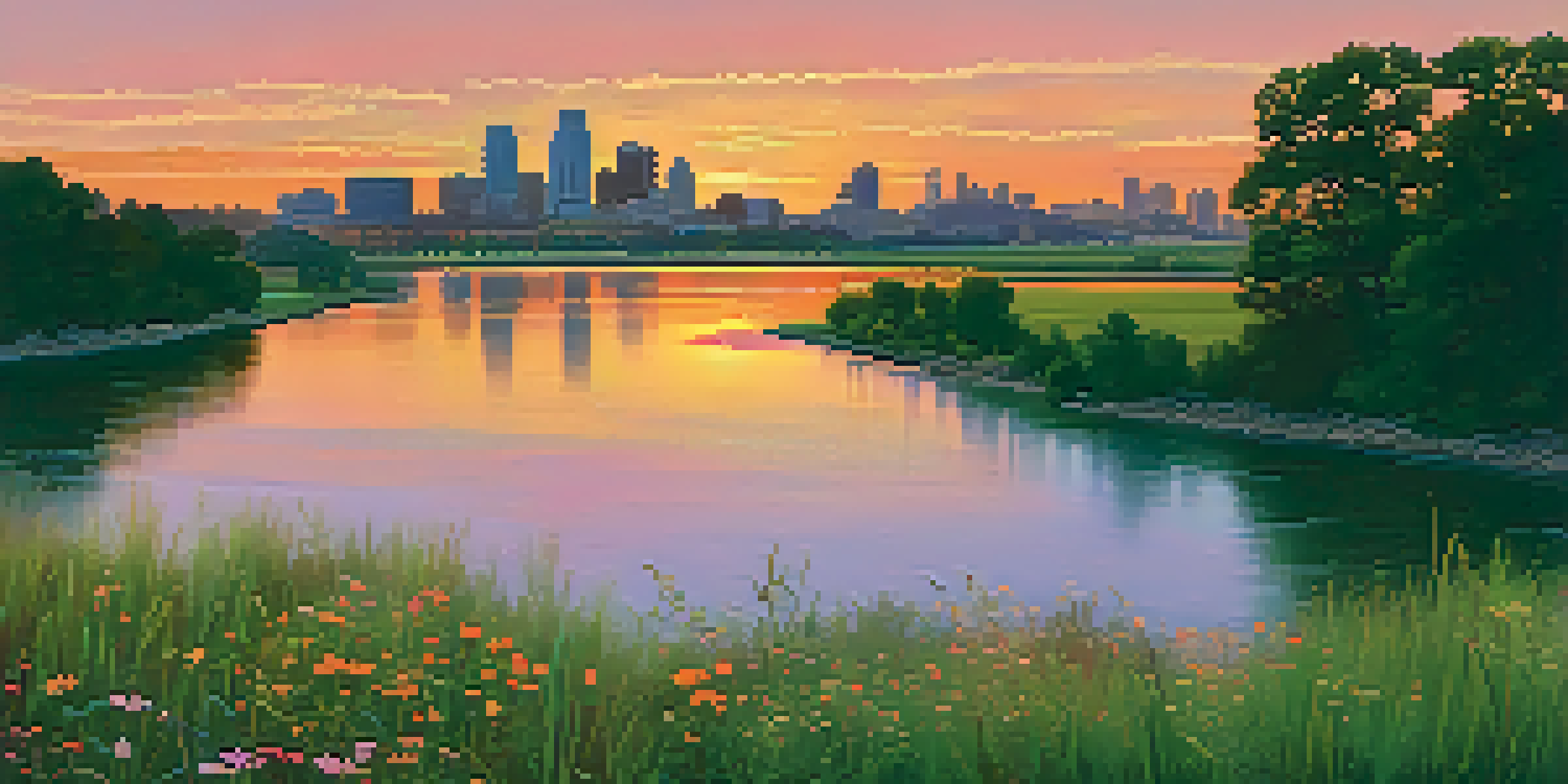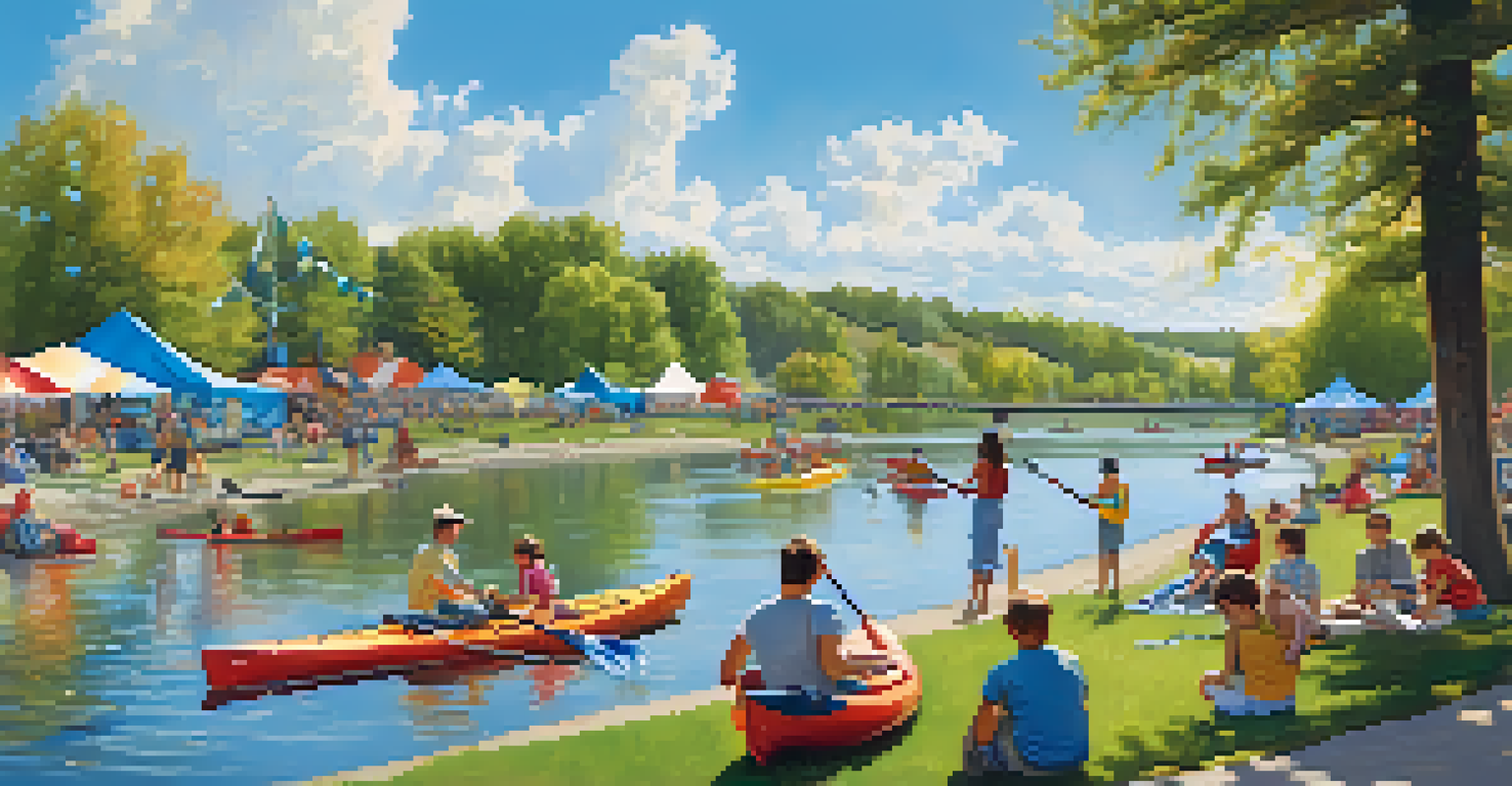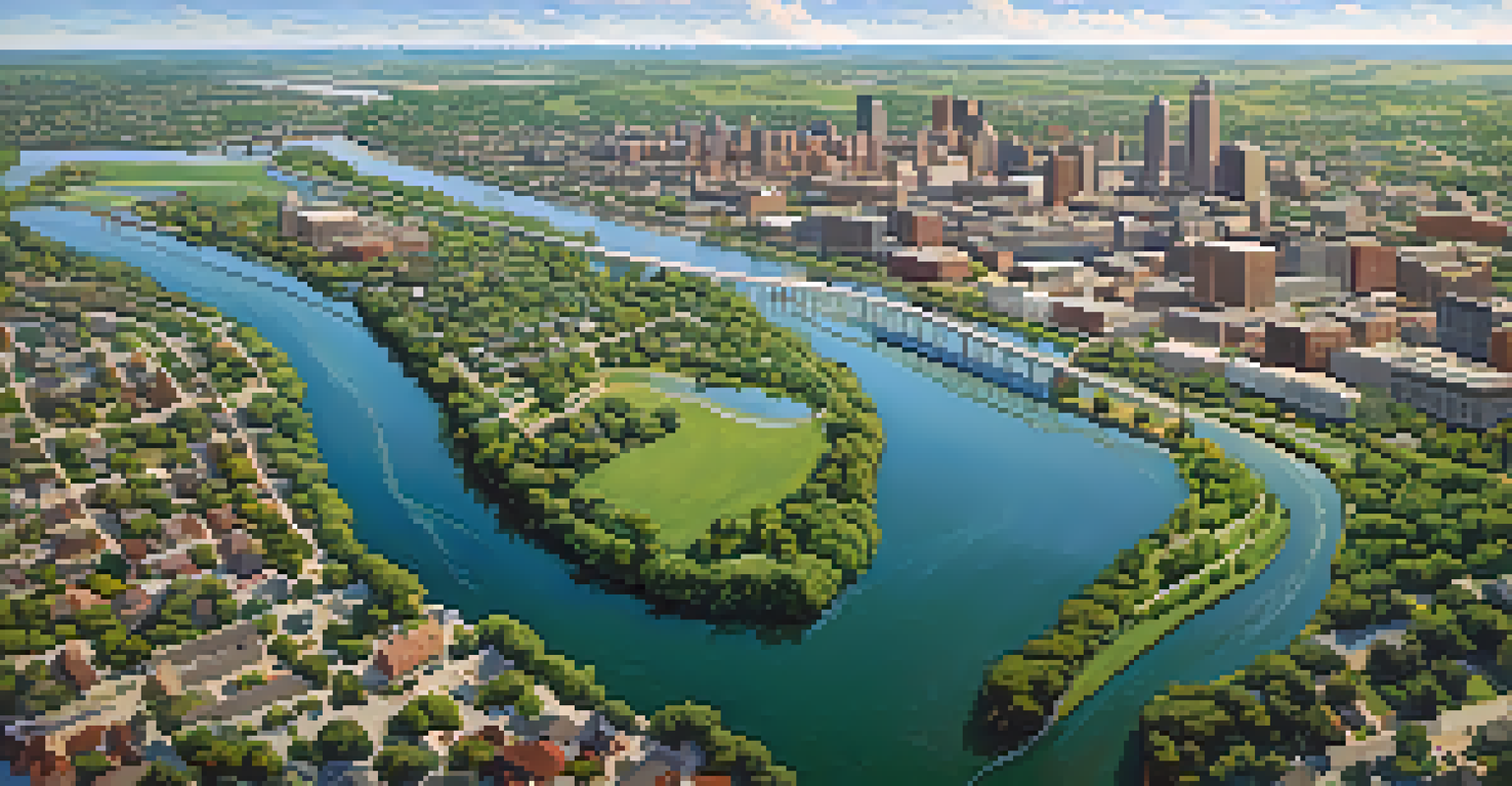Missouri River's Influence on Kansas City's Urban Landscape

The Missouri River: A Historical Overview
The Missouri River has played a pivotal role in the history of Kansas City, serving as a lifeline for trade and transportation since the early 19th century. This mighty river, stretching over 2,300 miles, is not just a waterway; it's a historical artery that has influenced settlement patterns and economic growth in the region. In the early days, it facilitated the movement of goods and people, helping to establish Kansas City as a crucial hub in the American frontier.
The river is a constant reminder of the journey we’ve taken, shaping our past and guiding our future.
As pioneers and settlers flocked to the area, the river's banks became prime locations for commerce and community. Towns and businesses sprang up along its shores, driven by the promise of easy access to transportation. The rich natural resources and fertile land surrounding the river further attracted new residents, fostering a burgeoning urban environment.
Today, the legacy of the Missouri River can still be seen in Kansas City's layout, with many neighborhoods and commercial districts tracing their roots back to its historical importance. Understanding this relationship helps us appreciate how geography can shape urban development and cultural identity.
Economic Influence of the River
The economic landscape of Kansas City has been intricately tied to the Missouri River. Its waters have enabled trade routes that have flourished over centuries, leading to a diverse economy that includes agriculture, manufacturing, and shipping. The river's navigability allowed for the transport of bulk goods, which was vital for local businesses and industries.

In the 19th century, the construction of railroads intersecting with river transport routes further amplified Kansas City's economic growth. This synergy between rail and river transport made the city a strategic point for logistics and trade, contributing to its reputation as a major economic center in the Midwest. The bustling riverfront became a focal point for commerce, stimulating job creation and urban development.
Economic Growth Through the River
The Missouri River has been a crucial driver of Kansas City's economy by facilitating trade and transportation, particularly with the integration of railroads.
Even today, the Missouri River continues to support economic activities, including tourism and recreation. Its banks host various events and festivals, attracting visitors and fostering community engagement, all of which add to the city's economic vitality.
Cultural Significance of the Missouri River
Beyond its economic impact, the Missouri River has also shaped the cultural landscape of Kansas City. The river has inspired countless artists, musicians, and writers, becoming a symbol of the region's identity. Local folklore and history are often intertwined with the river, showcasing its importance in the community's narrative.
In every walk with nature, one receives far more than he seeks.
Kansas City’s vibrant arts scene, including its famous jazz heritage, has roots that can be traced back to the river's influence. Artists often draw inspiration from the natural beauty and dynamic atmosphere surrounding the river, using it as a backdrop for creative expression. Festivals celebrating local culture often take place along the river, further cementing its role in the community's cultural identity.
The Missouri River serves not just as a geographical landmark but as a cultural touchstone that connects residents to their history and to each other. This sense of belonging and heritage is crucial for Kansas City's community spirit.
Urban Planning and the River's Role
Urban planning in Kansas City has been significantly influenced by the presence of the Missouri River. City planners have long recognized the river as a critical asset, shaping zoning laws, recreational spaces, and transportation infrastructure. The riverfront area has been developed to enhance public access, encouraging residents to engage with the waterway.
Parks, trails, and riverwalks have been integrated into the cityscape, creating beautiful green spaces that promote outdoor activities and community interaction. These developments not only enhance the aesthetic appeal of the city but also serve as vital recreational areas for residents and visitors alike.
Cultural Identity Shaped by the River
The river has profoundly influenced Kansas City's cultural landscape, inspiring artists and serving as a backdrop for community events and local folklore.
Moreover, the river's floodplain has necessitated careful planning to mitigate risks while maximizing the benefits. This balance of preservation and development reflects a growing awareness of the importance of sustainable urban practices in relation to natural resources.
Environmental Impact of Urbanization
As Kansas City has grown, the environmental implications of urbanization along the Missouri River have become increasingly apparent. Urban development has led to habitat loss and changes in the river's natural flow, which can affect local ecosystems. Understanding these impacts is crucial for fostering a sustainable relationship with the river.
Efforts to restore natural habitats and implement green infrastructure are underway to counteract some of the negative effects of urbanization. Initiatives such as riparian buffer restoration and stormwater management practices aim to preserve the river's ecological health while accommodating urban growth. These measures are vital for maintaining biodiversity and improving water quality.
The challenge lies in balancing development with environmental stewardship, ensuring that the Missouri River remains a vibrant part of Kansas City's landscape for generations to come. This ongoing dialogue between urban growth and environmental responsibility is essential for the city's future.
Recreational Opportunities Along the River
The Missouri River offers a plethora of recreational opportunities that enhance the quality of life in Kansas City. Residents and visitors can enjoy activities such as kayaking, fishing, and hiking along the scenic trails that line the riverbanks. These recreational options not only promote physical health but also foster a deeper connection to nature.
Parks and recreational areas have been developed to take full advantage of the river's natural beauty, providing spaces for picnics, community events, and outdoor sports. These venues often serve as gathering spots for families and friends, creating a sense of community and belonging. The river becomes a backdrop for memories, from leisurely afternoons to spirited festivals.
Sustainable Urban Planning Needed
As urbanization continues, Kansas City must balance development with environmental stewardship to preserve the ecological health of the Missouri River.
As awareness of the importance of outdoor recreation grows, local organizations are working to enhance access and promote sustainable practices along the river. This focus on recreation highlights the Missouri River's dual role as both a natural resource and a communal space for enjoyment.
Future Prospects for Kansas City and the River
Looking ahead, the relationship between Kansas City and the Missouri River is poised for continued evolution. As the city embraces growth and development, there is a renewed focus on sustainability and environmental conservation. Future planning efforts will likely prioritize maintaining the river's health while accommodating the needs of a growing urban population.
Innovative approaches to urban design, such as smart growth initiatives and eco-friendly infrastructure, are gaining momentum. These strategies aim to create a harmonious balance between urban living and the natural environment, ensuring that the Missouri River remains a cherished asset for the community.

Ultimately, the future of Kansas City and the Missouri River will depend on collaborative efforts among residents, planners, and environmental advocates. By fostering a sustainable relationship with this vital waterway, Kansas City can thrive while honoring its rich history and cultural heritage.